It’s not often that you get to walk through tunnels below the streets of London, especially ones which were never used as a passenger service. But Heather and I did just that below the hill of Mount Pleasant, on an evening visit to Mail Rail.
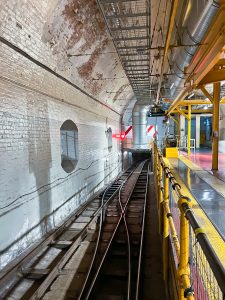
The Tracks Ahead
Shouldn’t normally be down here
We’d been to the Postal Museum , and particularly enjoyed the ride around a bit of the former London Post Office Railway, so jumped at the chance to take an after hours walk through those same tunnels.
It’s a bit of a strange experience arriving at the museum once everyone else has left, a security guy sliding the door open for us to get in and our name being checked off (they didn’t seem bothered about the ticket they’d sent us—I suppose that there were only a dozen or so people mean they could just go by name). We were soon down in the depot area and being kitted out in obligatory hi-vis jacket and hard hat before taking the slightly wrong feeling step down onto the tracks, up close with one of the little trains which normally run around this route. Out informative guide led us off down the inclined tunnel from the depot into the system proper.
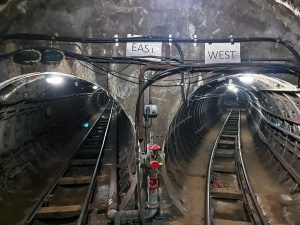
East And West
The tunnel split towards the platforms

Dartboard
For those down moments
The walking route actually follows that which the train ride takes, but obviously takes longer and gives much more chance for exploration and to see things only really glimpsed from the moving train. The first evidence of that is the first pause where the tunnel splits towards the east and west platforms and then by a bunch of sandbags —used in an emergency to stop an out of control train careening through the station. We followed the winding tunnel to the east bound platform, which appeared bright before us almost like a mirage. There one of the past carrying trains is parked up, as if just waiting to be sent on its way around the loop again. The feeling of suspended use is enhanced by the fact that on those tracks here not now used by the Postal Museum the original third rail hasn’t been lifted. The strange emptiness of the platform is shown by the abandoned dartboard, and a little graffiti like drawing on the wall—it could almost just be between shifts.
We had a go at moving one of the “Yorks” around; the wheeled carriers that came on and off the trains stuffed full of post. Heavy enough to take some effort to get moving even when empty. We could also get close up with the remains of one of the conveyor belts which would have spiralled up to the sorting office above. Lying on the floor of another just stopped train rests a diagram filled notebook—work in progress for work that never resumed.
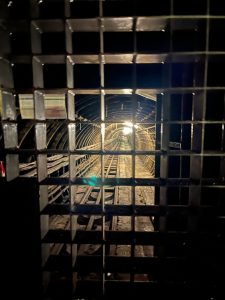
That Way Lies Forgotten Lands
The long tunnel away from Mount Pleasant
Back into the tunnels we went. Here they are all well lit which adds to the other worldly feel of the experience. The train, and our walk, follow the loop round below Mount Pleasant (there’s a similar loop at the other end of the platforms, so trains could circulate if needed waiting to be dealt with). On the ride it’s possible to glimpse tunnels going off into other directions. Here we could pause and look at them, spookily illuminated straight track behind a gate, promising that if we could only follow we would find another part of London. We could also see the area used to store rolling stock, glimpse very briefly from the train and here easily visible below us, including a vacuuming train which would clear up the metal worn off wheels and rails.
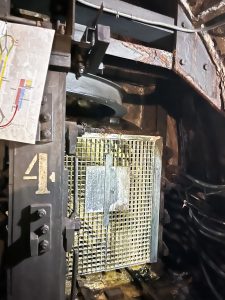
Blast Door
Installed during the war to protect from flooding
One unexpected piece of hardware was a great blast door, installed during the war as protection against a section of the tunnels flooding, its clear number four etched on it implying at least three others. There was also a helpful paper map pinned on it, which allowed us to orientate where we actually were in what becomes a bewildering array of tunnels.
The route took us back round, though it’s hard to keep a sense of direction with nothing but the track to follow and occasional siding branch (and at one point rumble of nearby train—maybe the Elisabeth line) as landmark. We soon found ourselves back on the other, westbound, platform, picking out the operating lever for that blast door just outside. Off limits but evident are the storage areas in the other part of the tunnels beneath the platform—we were told they’d only recently really been cleared out of whatever records were down there.

Stamp Collection
Let’s hope they didn’t take them off the letters!
There’s another conveyor, and an indicator board peculiarly numbered as the system didn’t use 7 or 9 as a destination indicator to avoid confusion. It’s also where they’d parked the second little modern train. On a bit of trunking someone had stuck a little stamp collection—hopefully not pulled off the passing mail! We poked behind some of the doors along the platform. One rather comically revealed one of our guide’s colleagues just emerging, and behind him the start of a long flight of stairs upwards. Another was a toilet. Most just linked through to the other platform we’d passed through earlier. At the end of the platform we had a chance to get close to the battery powered maintenance car, the only loco of the original system designed to take a person around the tracks.
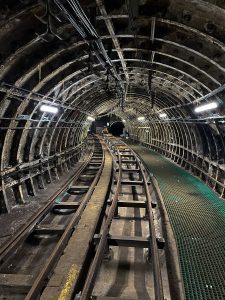
Maintenance Siding
Used to look after the modern little passenger trains
Beyond the platform one of the side tunnels has been made into a maintenance area for those modern trains, the tracks rising up slightly to allow better access. And that was about it, rejoining the inclined tunnel to take us in a human train back out of the underground and into the depot once more.
Heather and I found our way back up into almost day light and the attractive Union Tavern where we pondered just how much of Mail Rail may still be down there, whether they should open more to allow for a ride further than just beneath Mount Pleasant, and whether in this age of sustainability they shouldn’t just bring it back into use.

Quiet Little Train

CCTV

The Tracks Ahead
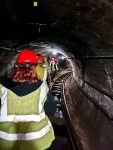
People Train
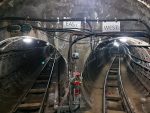
East And West

Platform Ahead

Mail Train

Slightly Eerie

Wall Sketch
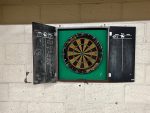
Dartboard

Getting To Work
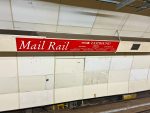
Eastbound

Conveyer

Golden Rules

End Of The Platform

Notebook

Stalactites
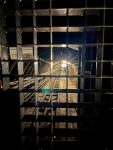
That Way Lies Forgotten Lands

GPO

Abandoned Trains
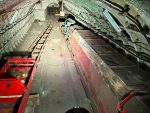
The Sideings Of The Abandoned

Map
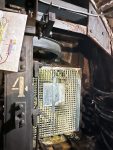
Blast Door
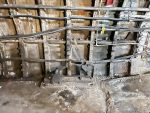
Door Lever

To Below

Shunt Loop Car Shed
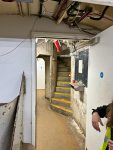
Stairs Up

Stamp Collection
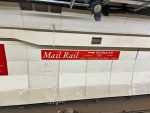
Mail Rail Westbound

Goodbye Platform

Maintenance Train
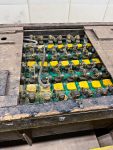
Battery Connections

Cab

Points
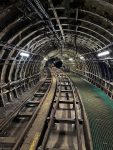
Maintenance Siding
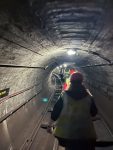
Comments and Pings